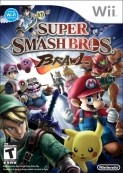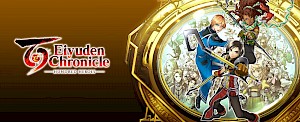Hands-On: Super Smash Bros. Brawl

Posted 08 Mar 2008 at 09:30 by Tom Phillips

Written by Joao "Hellfire" Lopes
| "Everything in the game screams fan service..." |
Super Smash Bros. Brawl is without doubt one of the most eagerly awaited games of the last years, but with all the hype and daily updates showing us the game's secrets does the game live up to its name? Yes. Yes, it does.
Forget for a minute that Simon Belmont, Megaman, Alucard, Crono and the other hundreds of characters that you dreamed would be in Brawl didn't make the cut, this game has all the bases covered. Melee introduced a myriad of unlockables to the series that gave the game huge replay value, but Sakurai thought this wasn't enough and has given us much more. Trophies, music, stickers, more characters, online, the ability to record battles, take screenshots and bet on other people's battles - not to mention an amazing story mode, the list of features goes on and on. This game is, at the lack of a better word, complete.
Everything in the game screams fan service: the age old dream of having Sonic fight against Mario is finally reality, the trophies (both assist and normal) and huge soundtrack give games that aren't represented with playable characters a chance to shine, even if only a handful of Japanese gamers have heard of them.

The game's fully fleshed out story mode The Subspace Emissary is one of the best new additions.
Even more impressive is the immense soundtrack that features beautiful medleys, arranged to perfection by 38 of the most talented videogame music composers in the world, including Koji Kondo (Mario, Zelda), Nobuo Uematsu (Final Fantasy) and Kenji Yamamoto (Metroid Prime series, Super Metroid). The quality of the musicians and their love for games is evident in every single track of the game with segments of certain songs coming straight from the originals followed by a smooth transition into rock, orchestra, jazz and many other genres, but always retaining the original feeling of the game they belonged to. Tiny jingles from Wario Ware will make you smile, epic Zelda medleys will leave you in tears, a bad ass Kirby prog-rock remix will make you air guitar and rearrangements of some tracks of a certain GBA RPG will make you wish they would just make a new instalment of the series already! (Golden Sun, possibly? Couldn't agree more - Ed.) Some might think that music is irrelevant in a fighting game, but in a nostalgia filled game like Brawl, it plays a very special role and surely, older gamers will be thankful for it.
Graphically, it's an amazing game, with beautiful levels, highly detailed characters, amazing animations and has a silky smooth framerate that never dips below 60 fps. As with Melee, the character models have a slightly more serious and realistic look and design more suited to a fighting game, but never losing the original characters' charm.

A stunning amount of work has clearly been put into the look and design of the levels.
But these things you could have guessed by reading the Dojo or watching some videos online, what you really want to know is: how does it play? Well, Smash Bros veterans will feel right at home, but don't think that you know it all already - old characters have been changed and balanced and newcomers will challenge you to learn from scratch, not just because they're new fighters with new move sets, but because some stand out so much from the rest of the roster and bring a completely different fighting style to the game (and fighting games in general). For example, Olimar needs to pluck Pikmin from the ground and his attack properties will change depending on the Pikmin that's in front, not to mention that you can throw them towards your foes so they can latch on and attack. Snake is also a breath of fresh air with his landmines and focus on explosives throwing whatever Smash tactics you had away and forcing you to learn from scratch if you want to play well with (or against) him. But these gargantuan differences between characters that could ruin any other game are the essence of Smash Bros., which is essentially a massive melting pot of videogame history.
The stages are equally varied, with classic appearances like Final Destination and Pokémon Stadium (not to mention the Melee levels) contrasting with the very fun and wacky stages, namely the brilliant Wario Ware level that has contestants fighting in the elevator lobby that appeared between mini games in Wario Ware Touched!! for DS and suddenly being thrown into a mini game, where the players that manage to succeed get a power up. Another notable new feature is that some stages are heavily destructible which makes for even more hectic fighting. There are also lots of new items and weapons that can change the tide of the battle and leave beginners scratching their head wondering what just happened with the biggest changes being the Assist Trophies and the Smash Ball. Every time one of these appears, it's an undisputed race to see who reaches them first, with the Smash Ball having the peculiarity of needing quite a beating to be broken - and if the player who has it gets heavily hit before using it, the ball is dropped and the races begins again. It's incredible fun, not just because of the awesome finishing blows, but because everyone drops what they were doing to get the Smash Ball before their opponents.

Hmm, this looks familiar... Pichu soup, anyone?
Surprisingly, all control methods work really well. Obviously the GameCube controller works as perfectly as before and will be the weapon of choice for players who logged hundreds of hours in Melee, with the Classic Controller similarly working just fine too. The biggest doubts for us rested with the use of Wii's remote and/or Nunchuck combination. However, the Remote and Nunchuck style works perfectly (although it might feel weird at first for Melee players) with more than enough buttons to pull off every move with ease without needing to move your fingers all over the place. The Wiimote only control method, despite the lack of buttons, does do its job decently. While it's the worst control type, (mainly because it abandons analogue movement and to jump you need to press up on the D-Pad, which can lead to accidents), it's a good enough stand-in if no other control methods are available. These two last control schemes have the advantage of some sounds coming through the remote speaker, like a war cry from the character you choose in the selection screen, or Wario's voice in the Wario Ware level at the end of the mini-games. A great and very useful feature is that you can fully customize the controls and even choose if you want to tilt the remote to do smash attacks. Control methods can also be saved to profiles, so you and your friends don't need to change the controls every time.
With the addition of a well fleshed out single-player mode and an enormous list of unlockables, Brawl will grip players to their controller for hours and hours. With the online mode, offline multiplayer and a high level of customisation that caters to both every fans' taste, this game will certainly be in your Wii for a long, long time. Sakurai and his team have done a remarkable job exploring every nook and cranny and truly perfecting what was and delivering much more. But above all, above the new content and the shiny graphics, Super Smash Bros Brawl's greatest asset is one that has unfortunately been criminally overlooked in a lot of games of late: pure fun.
We'll have an even more detailed review nearer the European release, but rest assured - for those anxiously awaiting that date, and for our North American readers who get their paws on the game in a matter of hours, it is most definitely worth the wait.























